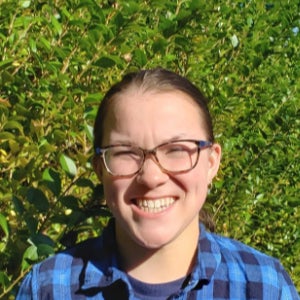Mention the term 3D printing to the average person, and it’s fair to say many would think of a smallish, home use machine programmed to create dragons or orcs like those from fantasy gameplay. However, mention it to mechanical engineering major Sofia Lanzi and the term means much, much more. It means a year of study and work in France, learning a new language, and helping to create a special attachment for a machine large enough to 3D print entire buildings.
Lanzi wound up in France through the International Engineering Program (IEP), a five-year course of studies that includes spending a year in a different country. Although she had previously only been in France once (and only for a short while), Lanzi had no issues becoming accustomed to European culture. “In high school my mom and I traveled every summer. For me, there was no culture shock. I know that every culture is different, and it’s just a matter of internalizing it. I learned to just roll with the differences because I had already traveled a lot.
After a semester of studies, Lanzi found herself interning at a company that would allow her to put both her technical knowledge and her travel experience into action. “Constructions-3D is a very international company,” Lanzi said of her internship firm. “To them, having a non-native speaker isn’t a big deal. I went to visit them before I accepted the internship offer.” The employees made Lanzi feel welcome, and she thought that this company, with 30 employees, would be a “just-right” size for the experiences she was searching for. “It was very impressive. I got to talk with some of the employees, and I felt like I would fit in well here.”
Constructions-3D manufactures machines that can print concrete structures automatically using custom programmed information. Lanzi is designing and prototyping a new print head for their largest printer, which is powerful enough to create a building. The printer is partially comprised of a large arm that ends in a head. Following programmed instructions, the printer will move that arm and extrude layers of concrete that can form the walls of a building, for example. The process looks a bit like a soft ice cream dispenser reaching out to fill ice cream cones.
Another appeal of working at Constructions 3-D was the prospect of going beyond CAD software as part of her internship. “I had the opportunity to build what I was designing, which I love. One of my hobbies is building; that’s why I went into mechanical engineering. It’s really something I enjoy.” Lanzi’s print head will allow the machine to do finer detail work not possible with the current iteration.
And what does someone with a full-time job building things do in their free time? “I like to build models, like the spaceships from Star Wars,” Lanzi said.
Lanzi is effusive about her experience with the International Engineering Program (IEP). “To be perfectly honest, it’s the only reason I went to URI. I like the program a lot. It gave me the opportunity to work with the construction company I like. It’s an amazing internship and it’s in an industry that’s growing. After working in Constructions 3-D, I feel that in the future I can either work in France or implement my background somewhere at home.”
By Hugh Markey

